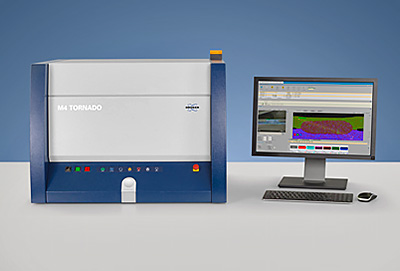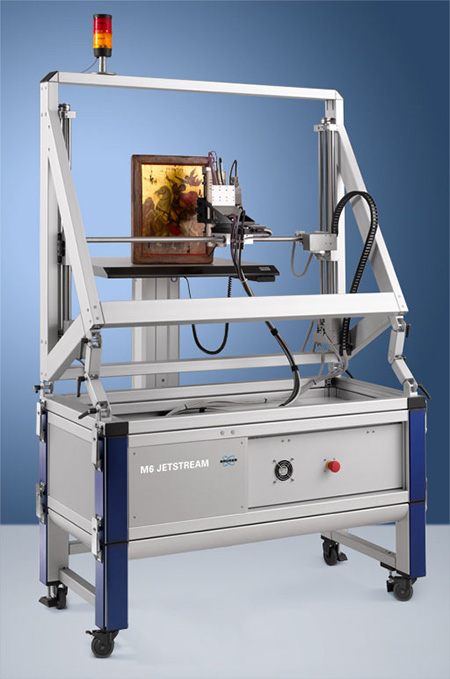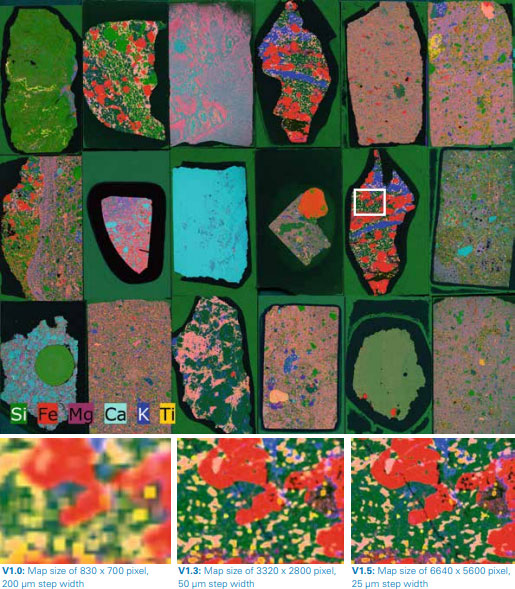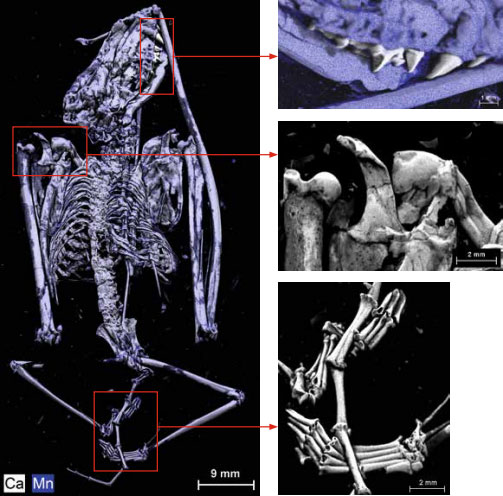Large Elemental Distribution Maps with Micro-XRF
How to generate large elemental distribution maps with micro-XRF, with the Bruker M4 TORNADO or M6 JETSTREAM. Visual information about the distribution of elements on your sample, at high resolution.
Blue Scientific is the official distributor for Bruker Micro-XRF in the UK and Nordic region (Norway, Sweden, Denmark, Finland, Iceland). For more information or quotes, please get in touch.
Micro-XRF instruments
More posts about micro-XRF
Contact us on +44 (0)1223 422 269 or info@blue-scientific.com
Large, High Resolution Maps
Large elemental distribution maps with more than 40 megapixels can now be created using Bruker’s updated ESPRIT 1.5 software. This is compatible with the M4 TORNADO and M6 JETSTREAM micro-XRF spectrometers.
This gives you the high spatial resolution of micro-XRF, as well as making the most of these systems’ large scanning areas. This opens up a new range of applications, for scanning and analysing element distribution on larger areas, with the same high resolution as conventional micro-XRF.
- Large maps up to 9000 x 7000 pixels
- Easy sample handling and image focusing
- Complete or piecemeal (offline) post-processing
- Extensive control of layer and bulk quantification
Map Size


Bruker M4 TORNADO
Flexible, for all sample types and applications
- 190 x 160 mm² maps
- 25 µm spot size
Bruker M6 JETSTREAM
Mobile rig, ideal for museums, galleries and geology
- 800 x 600 mm² maps
- 100 µm spot size
Sample Positioning
The new version of the software has features for easy sample handling, positioning and navigation, as well as focussing images and creating mosaics. This functionality makes it convenient and easy to use – for example:
- Centre the sample stage in both vector and z-focus mode.
- Sample stages can be driven to several positions in turn when creating a mosaic images, to set different mosaic boundaries.
- Previously set boundaries are stored, and the current stage position is displayed on screen.
Handling Large Datasets
Map data can be streamed directly to your PC’s hard drive. This means that the maximum size of the map is no longer limited by architecture or installed RAM, so you can acquire ultra large maps of more than 40 megapixels. For large maps, a solid-state hard drive is recommended for data post-processing.
Analyse Smaller Sections
As well as viewing the whole map, you can also select smaller sections and details to examine more closely. For piecemeal analysis, you can select areas and objects, then export them with a single keystroke.
Applications
Micro-XRF is suitable for all sample types and therefore has an extremely wide variety of elemental analysis applications. If your area of work is not mentioned here, please get in touch as it may be possible!
- Materials science – including corrosion, catalysis, solar cells & failure analysis
- Geology and archeometry
- Coatings and layers
- Life science / bioscience
- Microelectronics
- Forensics
Micro-XRF e-book with lots of example images
Example: Geological Thin Sections
The M4 TORNADO can accommodate up to 18 standard thin sections and measure them in a single run. Each sample can then be cut out and saved separately as you need to.
The pixel size can be decreased to 25 µm, for maps of over 35 million pixels. A sample area of 166 mm x 140 mm can be measured with high quality. This reveals tiny structures and cracks of 30 µm as shown in the example below, highlighted with a white rectangle.

Large elemental distribution map of geological thin sections. Taken with the Bruker M4 TORNADO.
Example: Bat Fossil
This bat fossil was scanned with the M4 TORNADO, The map shows the element distributions for Ca (white) and Mn (blue). This shows that both elements are present in the bones, but in the teeth only Ca is present. The detail images show the bat’s jawbone, shoulder and the feet with part of the tail in high quality.
The pixel size is 25 µm and the map size is 43 mm x 82 mm (1700 x 3300 pixels).

Element distribution map of a 47-million-year-old bat fossil at the Senckenberg Museum in Germany. Scanned with the Bruker M4 TORNADO.
Further Information
Blue Scientific is the official distributor of Bruker Micro-XRF in the UK and Nordic region. If you have any questions or if you’d like a quote, please get in touch:


